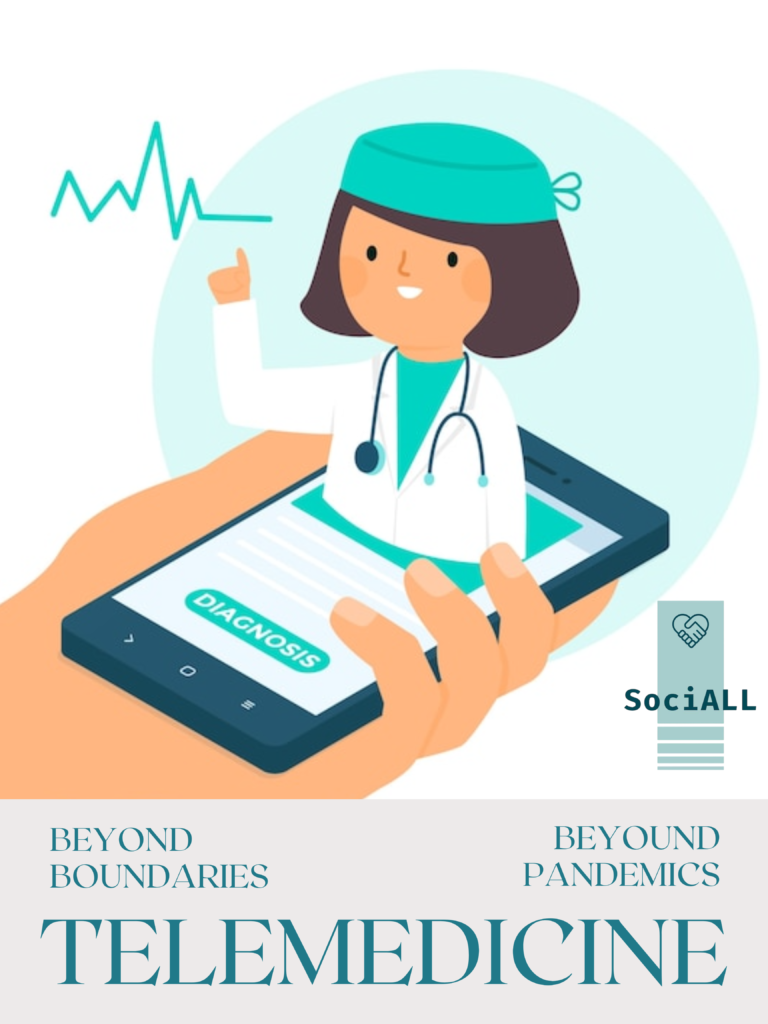Covid-19 came to prove, that pandemics test the readiness of healthcare systems, revealing the structural obstacles. As the popularity of remote health care has grown significantly, we often hear various buzzwords such as telehealth, telemedicine, and telecare. Today we’ll be focusing on telemedicine, its origins,
features, use, problems, and future. While we’ve touched on some aspects earlier, the world of telemedicine holds countless more exciting revelations to uncover.
Telemedicine entails delivering healthcare services through a paradigm shift from traditional in-person interactions between patients and doctors (or doctors and doctors) to remote interactions facilitated by the utilization of Information and Communication Technologies (ICT) and involving using technology to
provide medical consultations, diagnoses, treatments, and monitoring remotely.
Telemedicine, often considered a modern innovation, traces its roots far back in time starting from ancient eras when in ancient Rome and Greece in 500 BCE patients received medical advice from doctors using representatives. However, it was in the 19th century that the advent of electricity and radio set the stage for telemedical advancements. As the 20th century witnessed the dawn of television and the Internet, the landscape of healthcare was forever changed. The evolution of telemedicine applications in Europe began in the late 1920s with Dutch, Italian, Norway, and France physicians. The first clinical application of telemedicine was in cardiology. This was followed by radio consultations from medical centers for patients across remote areas. According to the World Health Organization, mainstreaming telemedicine in health systems could reduce healthcare inequities. So, what can be better than quality health care with also reducing costs? Several pilot projects have taken place in the last few decades having showcased impressive outcomes, illustrating the potential for enhanced health and cost efficiency. In 2014, five main use cases were reported in EU Member States including teleradiology, teleneurology, teledermatology, etc. 2 And the field keeps going and growing. Europe’s Telemedicine Market share was valued at USD 12.8 billion in 2019 and is expected to witness a 19.1 % CAGR from 2020 to 2026.
Generally, most telemedicine solutions are products and/or platforms. A telemedicine product is usually marketed with a platform (or an application) on which the data is shared. Then, the data is stored in a database ready to be analyzed and interpreted by a doctor, another healthcare professional, or by
software. This product-platform (-database) combination is widespread in telemonitoring solutions.
For instance, the LifeWatch MCT 3 Lead developed by Philips is a mobile cardiac telemetry (MCT) product that detects, records, and wirelessly transmits asymptomatic and symptomatic arrhythmia to clinicians for analysis. The four wearable cardiac electrodes are connected to a smartphone via Bluetooth.
If an arrhythmia is detected, the smartphone automatically sends the data to a monitoring center for review and notifies a doctor if required.
Telemedicine products can be classified into two types wearable devices used mostly for personal purposes (well-being, sport, fitness, etc.) and medical devices used in a medical framework (i.e. in relations with a healthcare professional). An example of a wearable telemedicine product is the Polar Pro strap developed by Polar Electro (Finland) is a soft textile strap with improved electrodes, which measures the patient’s heart rate accurately. But, Biotronik Arrhythmia Monitoring (Biotronik, Germany) is considered a wearable medical device since it allows healthcare professionals to review and monitor patients’ heart rate data.
WHO/Europe and the European Commission have launched initiatives to develop and implement telemedicine through various policies, notably the Regional Digital Health Action Plan for 2023–2030 that was approved by ministers of health at the WHO Regional Committee for Europe in September. The plan states that digital health solutions, including telemedicine, can contribute to advancing universal health coverage, protecting the public in times of emergencies, and enhancing health and well-being in the Region.
As we could observe, telemedicine is developing as part of the new post-pandemic reality. While the promise of it is alluring, its comprehensive implementation depends on factors such as digitalization levels, digital literacy of patients and healthcare professionals, data sharing, and processing legislation.
Although teleconsultation can be swiftly implemented with modest investment (for instance, in France, each doctor can receive the support of up to 525 Euros for essential software solutions), other telemedicine services necessitate substantial initial funding.
Another question arises: can telemedicine be trusted in terms of data privacy? The potential risks associated with breaches of healthcare data privacy due to increased data exposure on networks and online platforms must be acknowledged. Therefore, telemedicine applications should ideally incorporate
robust encryption solutions for enhanced security. These challenges are already being faced by countries inside and outside Europe struggling with similar issues.
Stay tuned for more insights as we journey through the profound transformation, that is reshaping healthcare in Europe and beyond.

